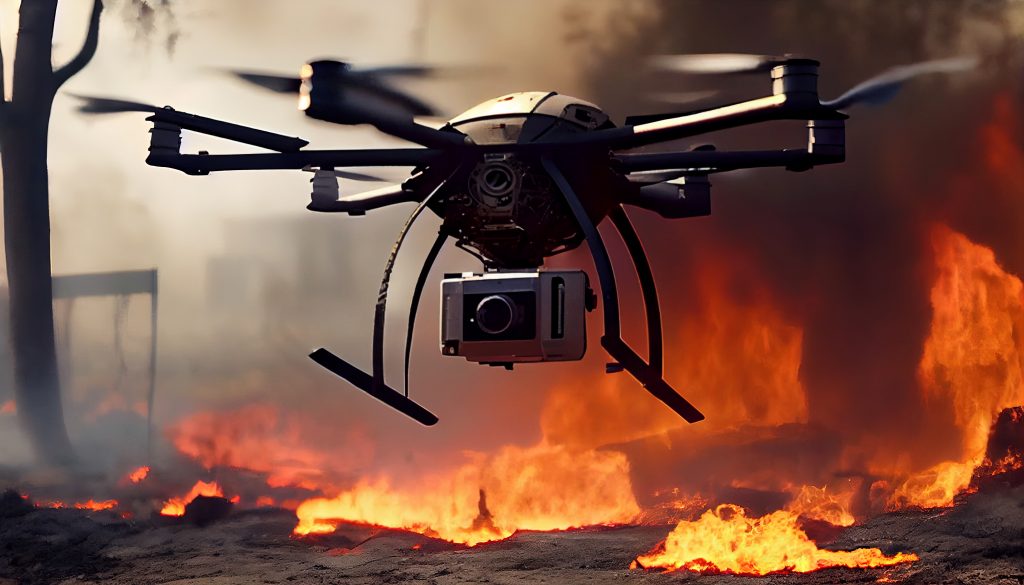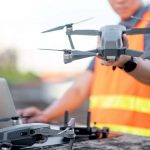Sure, drones are used for surveying, inspection, security, and photography. But my business is traditional, and we have always done it the same way, do I really need drone tech in my profession? Yes, and here’s a few examples of how drones can help your business thrive.
Farming
Drone maintenance is expected to grow to $65B by the year 2026. A large reason for the expected growth will be the costs associated with servicing equipment the used in commercial applications. Already, farmers have embraced technology in every stage of production.
Precision farming is reducing the need for manual labor, drones are also used for fertilizer and pesticide application, and drones are also finding use in the harvesting stage.
Dronetech, an Austrian drone services company, is managing fields through the use of drones and AI. Data is gathered, processed, and analyzed to provide the farmers with the best information.
Farmers now have the ability to make decisions with real-time information. The technology helps the farmers maintain sustainable farming practices. The main inputs: fertilizers and water are managed with more accuracy, resulting in an efficient production. As a result, of the technology, the production creates a noticeable reduction in waste.
Testing
Xelevate offers two testing facilities, where companies are able to demonstrate their abilities, and push for further advancement. Farmers that have embraced drone technology have seen profits increase.
Other industries are taking note and drone adoption is continuing to grow at a fast pace. Exploration of whats possible will lead to the next breakthroughs, and areas like Xelevate will be responsible for much of the advancement.
Warehouses
A startup, called Gather AI, is intending to use drone technology to improve the inventory monitoring process. The plan is for drones to determine the location and quantity of items on the shelves. The hope is for small businesses access to AI without the high costs. The drones are already deployed in 14 warehouses, with more growth expected soon.
Delivery
Drone deliveries are happening, like it or not. Likewise, governments are trying to stay ahead with regulations. Alphabet’s, Wing, is one of many large drone operators, increasing the number of deliveries daily. The industry has suffered setbacks, but has continued to set milestones.
Small items: fast food, groceries, and pharmaceuticals are among the items most commonly delivered. Drones are more efficient than ground transport in many ways. The full potential of the industry has yet to be realized, but the wheels of progress will continue turning.
Oil and Gas
The oil and gas business will greatly benefit from drone use. Drones are capable of pipeline and rig inspection and would offer many of the same benefits farmers have been witnessing, such as cost savings and labor reduction. Government regulations need to continue to be loosened to allow for more mainstream adoption.
Beyond Visual Line of Sight (BVLOS) operation will be an impetus for greatly expanding the use within the industry.
Police
Police departments all across the country have faced difficulty in recruiting. As a result, the Minneapolis police department has embraced drone technology to deal with staffing shortages. The drones are able to cover more territory in the case of lost children or other emergency situations.
Concerns remain over the use of drones and the potential for civil rights abuses. Benefits include the ability to respond to crime scenes faster. They have the capability get the license plates of people involved in crimes.
Minnesota and many other cities are facing an epidemic of criminal activity and will surely look towards drone tech to fill the gap in recruitment. Many departments across the country have realized the cost savings. Many departments are not able to afford helicopters. Drones are affordable for many of the smaller and rural departments.
Reforestation Efforts
A startup called DroneSeed is using drone technology to help with reforestation efforts. The drones are bringing seeds or seedlings out into fire scorched areas for planting. One aircraft is capable of seeding 3/4 of an acre. Part of the funding for DroneSeed comes from companies looking to offset their carbon emissions. The company is one of the largest seed banks in the U.S. and has a capacity of millions of seedlings. Drones have seen widespread use in agriculture. The extent drone technology permeates the industry remains to be seen. So far, the industry has been continuing to find innovative ways to solve problems.
Mining
Mining operations have been investing in drones. Technology is being used for mapping and surveying the infrastructure in the mines, providing a much better degree of safety. As a result, the productivity of the mines has been greatly enhanced.
The labor needed to drill for resources has been substantially reduced. Major cost savings have been realized. Furthermore, drone tech when combined with other autonomous technology could really be a driver in pushing the operations into the future. Mining will continue to remain a very important sector of the economy.
Manufacturing
In addition to the uses seen in other industries, drones in the manufacturing process will be able to monitor the health of machines. Excessive heat could be detected before it becomes an issue, operations could cease before issues arise.
In addition, drones could be used for inventory management. Use of drone tech would, once again, lead to cost reduction. Additionally, drones could be used for picking orders. Finally, drones could pack goods for shipment. Drones should see more use in the manufacturing sector as companies look for ways to remain competitive.
Fish Conservation
Washington University and the Washington Dept. of Fish and Wildlife (WDFW) are using drone technology to monitor different Salmon populations. The drones will be used to learn about the ideal habitats for the different varieties of Salmon. Identification will also be made possible, through the use of drone technology.
The areas are in which Salmon spawn are often difficult to access, and the drones have made the difficult work possible. Researchers will continue to use drones to peak under the waters surface to learn more about fish species.
Drones for fishing are also being used to drop bait in the perfect area for trying to catch trophy fish. Purpose built drones are delivering heavy baits under the guidance of the pilot. The pilot can drop the bait over the exact area where they believe a predator awaits.
The drones are waterproof and rugged, to stand up to the task of the marine environment. Opinions are mixed as to the practice of drones assisting fisherman. Some people see the drones as taking the fun out of the sport. Others see the drones as a golden opportunity to catch the fish of which they would have never dreamed.
Conclusion
Without a doubt, drones have proven their usefulness in many industries, time and time again. Even so, drones have barely started to see the widespread adoption which we believe is coming. Industries that have embraced drone technology have thrived.
The workforce demand has been drastically reduced, cost savings have been realized. Businesses are continuing to utilize drones to enhance their bottom line. The question isn’t whether drones are useful in your industry, it’s whether your competitors will be the first to realize the benefits? If so, what will be the impact on your bottom line?





